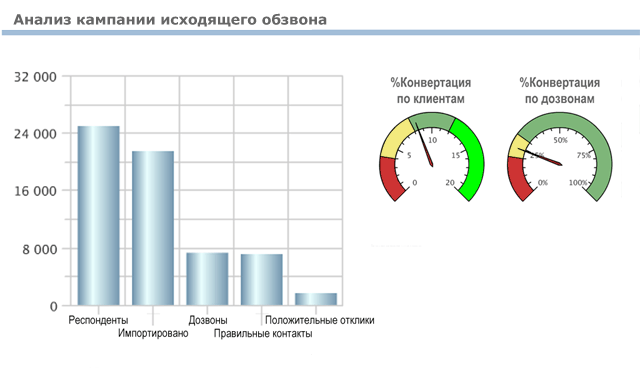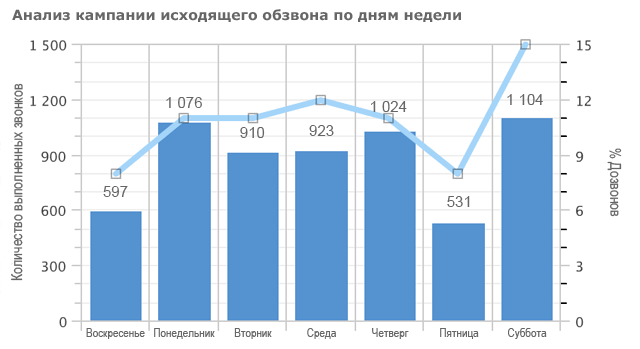Five benefits of using BI in a Call Center
My colleagues have already given examples of the use of BI-applications at the operational level. Today I would like to continue this topic and focus on several advantages of using such analytical tools in a Call Center.
The main advantages of using BI in a Call Center include:
- summary analysis of the Call Center
- combining and analyzing information from several systems
- identification of patterns and trends
- building «RealTime» Displays
- exception handling based on analytic data
Let us dwell on each of the items in more detail.
Summary analysis of the Call Center
Almost in any Call-Center in one form or another there are reporting tools. But, as a rule, the data in them are presented in the form of a multitude of different types of reports, which are rather difficult to analyze due to the large volumes and the significant spread of key indicators.
Business Intelligence tools will allow you to display all the necessary data in an easy-to-read graphic form and will provide a real opportunity to provide the necessary and sufficient amount for the normal operation of various user groups. So the head of the call center in a single window will be able to track all key indicators within the entire Call Center, and the supervisor will have the opportunity to fully control the work of the operators of his group.
At the same time, a flexible and customizable BI toolkit will allow you to easily change the appearance of the diagrams, configure units of measure and boundary values, as well as effectively work with data both in real-time and in detail analyze historical information.
Combining and analyzing information from several systems
BI can allow the qualitative accumulation and coordination of data from several systems, which will make it possible to use the actual results of the analysis.

The above is an example of an analysis of an outgoing call campaign, in which the data of the call center is supplemented by information obtained from the CRM System using operational BI. In this case, the value of «respondents» shows the total number of dialing entries, «imported» indicates the number of correct numbers, and the value of «dialing» determines the level of dialing within the outgoing call in the Call Center.
The advantage in the above diagram is that it becomes possible to identify the subscriber (correct contacts), bring to him a personalized offer and, if necessary, record his interest (positive feedback). Those analyze an already real business result.
An example of sharing data between a Call Center and a collection, the system is also described in the post «The Role of BI in Collection Processes».
Identification of patterns and trends

The diagram above shows an example of comparing the number of calls made and the effectiveness of dialing by day of the week. Such an analysis may allow a more reasonable allocation of resources when planning outbound dialing campaigns in a call center. So in this example, you can see that the lowest dial-up performance (8%) is observed on Friday and Sunday, and the highest – on Saturday (15%). Also, with more calls on Monday and Thursday, the performance on these days is slightly lower than on Wednesday. If such trends are repeated over several weeks, then it is quite possible to think about the reallocation of resources for more efficient use, depending on the tasks and capabilities of the call center.
Also, using the BI tools, it is quite convenient to identify and analyze trends by time of day, subject, operator groups, etc.
Building «RealTime» Displays
«RealTime» displays have already become an integral part of almost every major call center. They provide real-time information about the call center load for operators and supervisors, and also allow you to display various informational announcements, depending on the need.
Exception handling based on analytic data
When working in a call center using BI, you can not only track compliance with a specified key indicators and set various threshold values, but also set the execution of certain actions (sending email / SMS, calling web services, generating reports). For example, if the average call processing time goes beyond the boundary values in one of the operator groups, the shift manager will receive a notification and he will be able to reallocate agents promptly (redistribution can also be performed automatically).
The use of such analytical tools becomes quite appropriate when the Call Center begins to seriously think about introducing a call-center analyst into the staff. As a rule, BI tools allow you to several times increase the efficiency of the Call Center analyst and significantly increase the reliability of the results.





